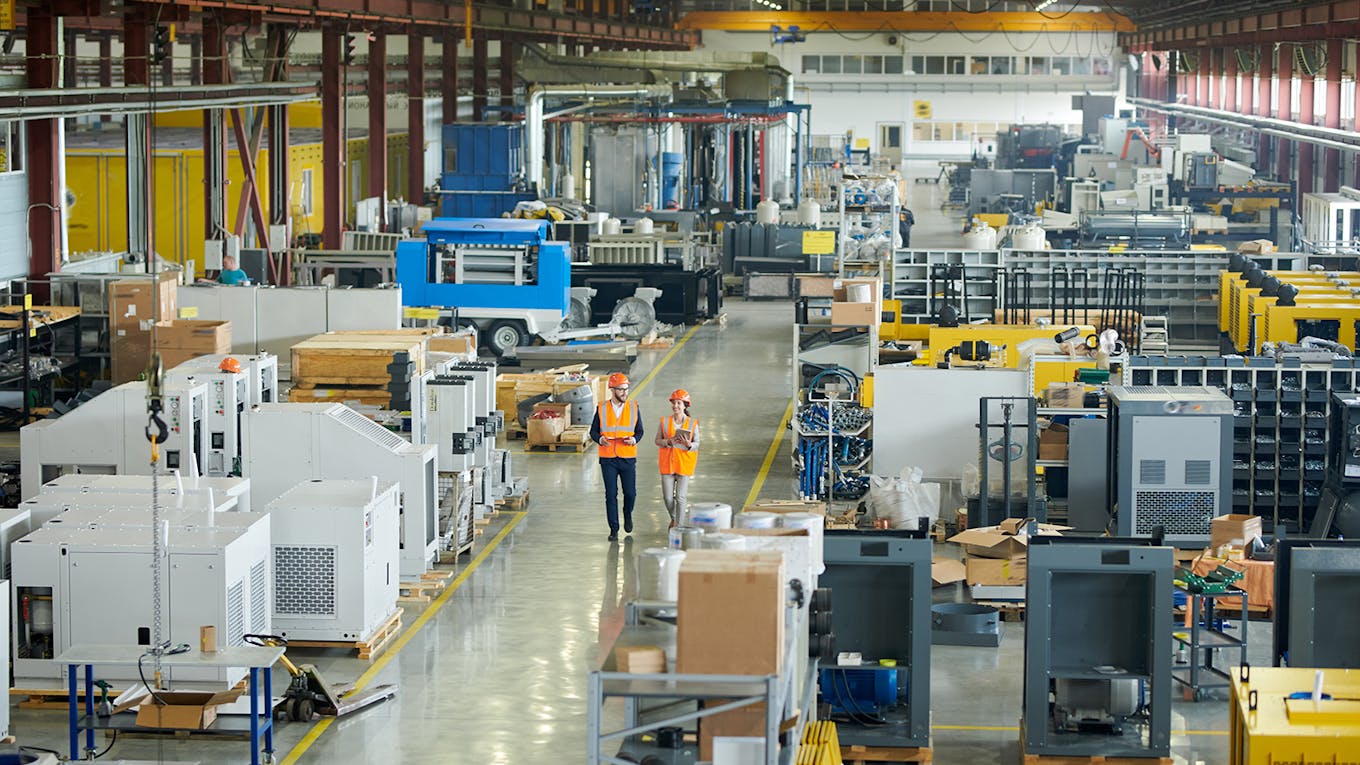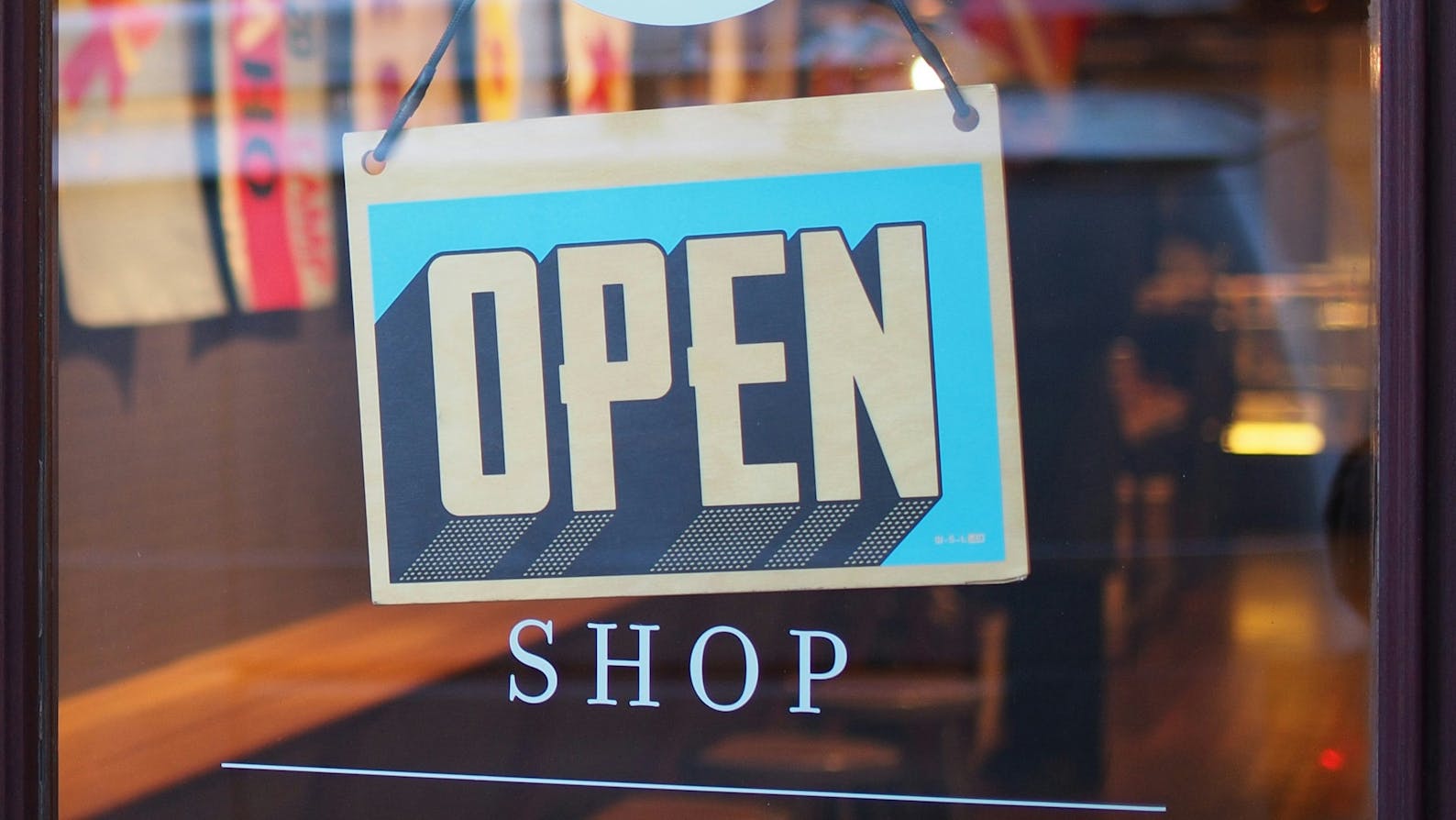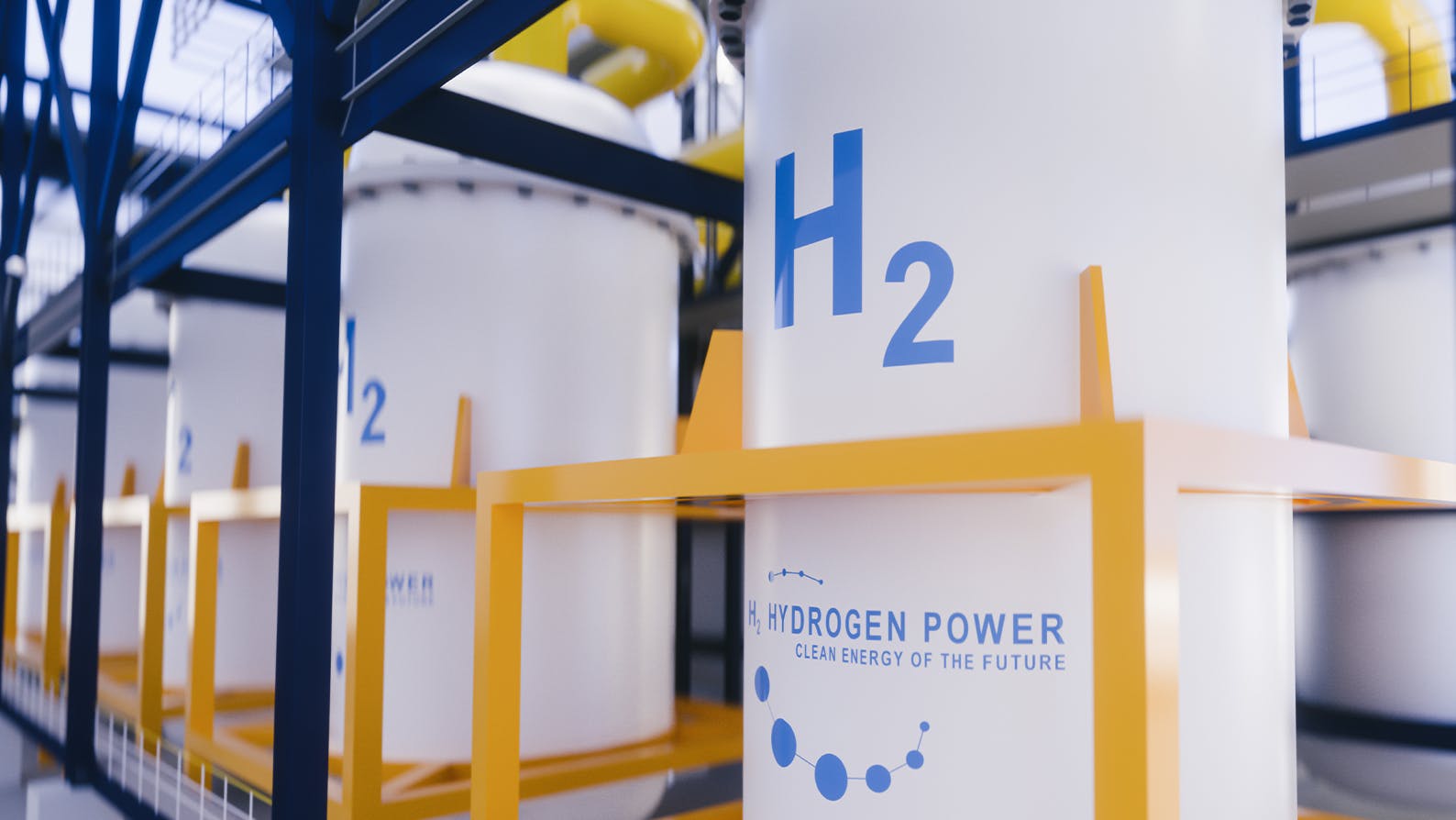Diversification and long-term economic resiliency
Our priorities

We envision a diversified economy that enables talent to thrive across sectors, provides greater fiscal stability and creates opportunities for businesses in all industries to succeed. Diversification must include and go beyond our traditional sectors of strength.
Challenge
Alberta’s natural resource sector has spearheaded our province’s economic growth and wealth for decades and currently accounts for approximately 25 percent of the province’s GDP. The energy sector has been critical for employment and in 2020, it employed 125,200 Albertans. As the energy sector transition progresses, Alberta has a unique opportunity to diversify its economy, both within and beyond the energy sector.

We are proactively moving towards a low-carbon future – and Alberta is leading the way. Given the investments underway in carbon capture and sequestration, hydrogen, biofuels, small modular nuclear reactors and other clean tech, Alberta is uniquely positioned to transform our global climate challenge into economic opportunity.
Talent and innovation are now the drivers of economic growth – and are more mobile than ever. To attract and retain talent, we need to create diverse opportunities, enabling young people to build careers in the field of their choice. With the imminent high risk of Alberta’s young talent being attracted to opportunities in other jurisdictions, this issue is critical and urgent.
The provincial government’s fiscal position is tied closely to commodity prices, which leaves our social services and public service sector vulnerable to market price fluctuations. By investing in diversification, we can reduce the volatility of our balance sheet and create more stability for the important services government provides.
Opportunity
A diversified economy will increase certainty and stability of provincial and municipal revenue. In equal measure, it offers varied economic opportunity so Albertans can contribute to the workforce in a manner better aligned with their experience, skills and interests.
Calgary already has multiple burgeoning sectors that will be essential to our long-term resiliency and economic growth, including software development, biotechnology, sustainable agriculture, clean energy innovation, operations and logistics centers, arts and entertainment and others. Our city also has a strong talent pool with a young and educated workforce: Calgary’s median age is 36 and 55 per cent of citizens aged 25 to 64 held a post-secondary degree as of 2020.
A diversified economy is key to promoting innovation across industries, remaining competitive on domestic and global stages and attracting the best talent to our city. Diversification is not achieved by a single solution or strategy; collaboration, support and investment are needed from all orders of government, businesses and institutions to succeed. With an entrepreneurial spirit, access to immense natural and human resources and one of the most educated populations in Canada, Alberta is well-positioned to thrive in areas we have succeeded in traditionally, and in new areas that will allow us to successfully diversify and expand revenue sources.
How we move forward
1. Diversify based on our strengths
Hydrogen holds significant potential as a fuel source in the economy of the future domestically and internationally. While provincial and federal governments have both made significant investments in the development of hydrogen energy, including through the Hydrogen Roadmap, marketing the province’s technology beyond Alberta is critical and can accelerate growth of technology as a key export domestically and internationally.
Bioenergy is renewable energy from living matter like plants and animal by-products. Bioenergy often emits less carbon and involves waste recycling– for example converting restaurant grease or feedstock into diesel fuel. Between 2009 and 2015, bioenergy product revenues went from $1.3 billion to $4.3 billion with Ontario and Quebec generating most of this revenue.
Biofuel production is forecast to increase 25 percent by 2024 globally. While bioenergy projects are underway in Alberta, it is the large-scale commercialization and adoption of these innovations that generates significant impact in our sustainability and recycling efforts. Sharing our innovation on the world stage can make bioenergy a key export for Alberta and cement our position as a global leader in clean and renewable energy.
Metals and minerals such as gold, copper and silver are essential to numerous technology products including electric vehicle batteries, electronic devices and wind turbines. Rapidly growing demand for innovative and sustainable technology products in the coming decades is expected to spur the need for mineral and metal inputs. For example, the electric vehicle market is projected to be worth $236.3 billion by 2027, up from $121.8 billion in 2020 and personal computer sales were up 13 percent since 2020 as remote work and learning became commonplace – a trend many expect to continue.
In Canada, B.C., Ontario, Quebec and Saskatchewan are currently leading mining and mineral resource development, even though Alberta has all the key elements to thrive in the minerals and metals industry. Our geology is favourable, we have a workforce experienced in extraction and development of natural resources and we have an ideal geographical proximity to the large U.S. market.
With the world’s population forecasted to reach $9.7 billion by 2050, the demand for agricultural and farm exports such as meat, dairy and grains are expected to increase over the next few decades. As a staple sector in Alberta, rising demand in agriculture presents an opportunity to scale by investing in efforts to expand, modernize and export agricultural practices.
Scaling operations needs to occur with parallel support for sustainable agricultural production, as environmental impacts often increase with growth. Further incorporating sustainability practices and environmental, social and governance principles into operations will aid the transition to a low-carbon economy and increase attractiveness of Alberta’s agricultural exports.
Manufacturing and supply chains have seen major disruptions from the COVID-19 pandemic while e-commerce sales increased globally, driving the need for adequate manufacturing and logistics hubs across industries and countries, especially for last-mile delivery and pick-up warehouses.
Updating Calgary’s infrastructure to build and support large scale manufacturing facilities, multi-purpose business centers and supply chain hubs that have the most up-to-date technology will strengthen our export market, mitigate vulnerabilities in supply chain and assist in attracting international business to our city. A strong manufacturing sector is crucial to creating economic opportunity and scaling our economic growth.
Consumer use of e-commerce and digital retail platforms has skyrocketed in recent years. Many large retailers are shifting from traditional brick and mortar stores to largely online platforms. For Alberta businesses to remain competitive, government support from all levels would support small and medium businesses in building their online presence.
2. Diversify beyond our strengths
The tech sector supports nearly every other industry, including logistics, education, health and energy. Technology-related job creation is projected to increase exponentially in the coming decades, so a thriving tech sector is a significant economic advantage for Calgary.
Growing the local tech scene will require (1) a strong talent pipeline and (2) access to capital. The war for talent among technology companies is challenging, with companies recruiting globally and offering increasingly competitive employment packages. Establishing a talent pipeline – from elementary school to post-secondary – creates a strong workforce that technology companies can access.
Capital is critical for tech startups to take their innovation to market. Government and industry need to create an environment that incentivizes investment in tech entrepreneurship. In 2021, 3083 tech companies were based in Alberta, which is more than double the 1238 companies identified in 2018. Of these companies, 58 percent were based in Calgary. This significant growth results in more jobs and increases corporate tax revenue for the government. Between 2018 and 2021 the number of tech companies employing between 25 to 49 people increased from 6% to 13% and annual revenues above $1M increased 66%.
The global aerospace market, valued at almost $298 billion in 2020, is expected to grow to $430 billion by 2025. Despite the COVID-19 pandemic disrupting air travel worldwide, the long-term demand remains high. Canadian passenger numbers are forecasted to reach over 39 million travelers annually by 2037. Investment in this sector will be key to ensuring this demand is met by Canadian companies.
The economy of the future is anticipating travel to be more efficient and more frequent. Investing in aviation and aerospace infrastructure, services and technology will increase job creation opportunities for Alberta. In Canada, the air transport sector is forecasted to grow by 51 percent over the next 20 years supporting nearly 800,650 jobs and accounting for $73.3 billion USD in GDP. Calgary has a strong foundation in this sector, with airlines like WestJet and recently, Lynx Air, headquartered here.
The COVID-19 pandemic has spotlighted the need for effective and innovative medical technologies. The prompt development of COVID-19 tests kits and vaccines were critical to reopening our economy and keeping loved ones safe. Ensuring Canada has a thriving medical technology sector will improve access to critical medical infrastructure such as vaccines when needed.
Currently, leakage of our local innovation to the U.S. and other countries is of great concern, evidenced by the decline of Canada’s biotechnology industries in recent decades. We need to strengthen Alberta’s regulatory framework and standard practices to better support adoption and promotion of local technologies within the province. Given the excellence of our research-intensive post-secondary institutions, we are well positioned to succeed as a global leader in the health and medical innovation.
The race for talent is stronger than ever and if we are to capitalize on our domestic talent and attract international talent, we need to invest in community vibrancy. This includes investing in arts infrastructure by building recreational and multi-purpose venues, efficient and accessible transit throughout the city and recreational winter programming (e.g., sports centers, winter festivals).
It is estimated that in 2021, the film industry brought in $482 million dollars in spending to the province with television series like ‘The Last of Us’ filming in Calgary through summer 2021. Billions are spent each year by entertainment productions vying for viewers, and the entertainment and media industry is projected to reach $2.6 trillion by 2025.
Given Calgary’s climate, terrain and proximity to the mountains, we have an opportunity to become the winter sport hub in Canada. Government support to expand programs and modernize facilities will help attract international athletes, spectators and sport tourism. With several facilities like Winsport and UCalgary hosting thousands of athletes each year, we have a strong foundation upon which to build.
Calgary’s restaurant and hospitality sector is a direct reflection of the diversity and culture of our city. To remain competitive as a tourist destination and improve the vibrancy of our communities, a thriving restaurant and hospitality sector is necessary. Festivals and other cultural events, our food landscape and our art scene are often produced by companies that work in the restaurant and hospitality sector.
Pre-pandemic, Alberta’s tourism sector contributed $8 billion per year to the province and over $3 billion per year in tax revenues. Many businesses including hotels, restaurants, retail stores and recreational services comprise the restaurant and hospitality sector and have been hit hard by revenue and staffing losses during the pandemic.
Government support through grants, subsidies, and tax credits such as the Tourism and Hospitality Recovery Program and the Calgary Reopening Grant Program, are needed now more than ever to support this industry.
Diversification and long-term economic resiliency
What we're saying

Report: Calgary business optimism skyrockets
The Calgary Chamber highlights business sentiment for Q1 2024.

Calgary business thrives at Collision
Last week, the Calgary Chamber – with a delegation of over 70 Calgary-based businesses – showed up in force at Canada’s largest tech conference. One clear message we shared: Calgary’s tech sector is thriving and we're not done yet.

Alberta's hydrogen potential
Hydrogen presents unique opportunities for Alberta to be a global leader in the energy economy and will be key for Canada to achieve net-zero by 2050.






